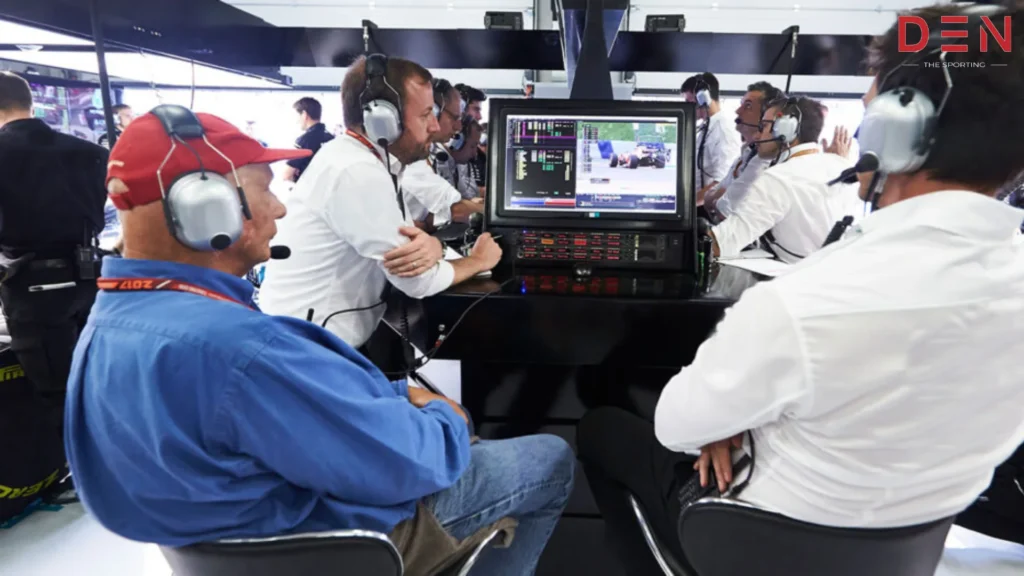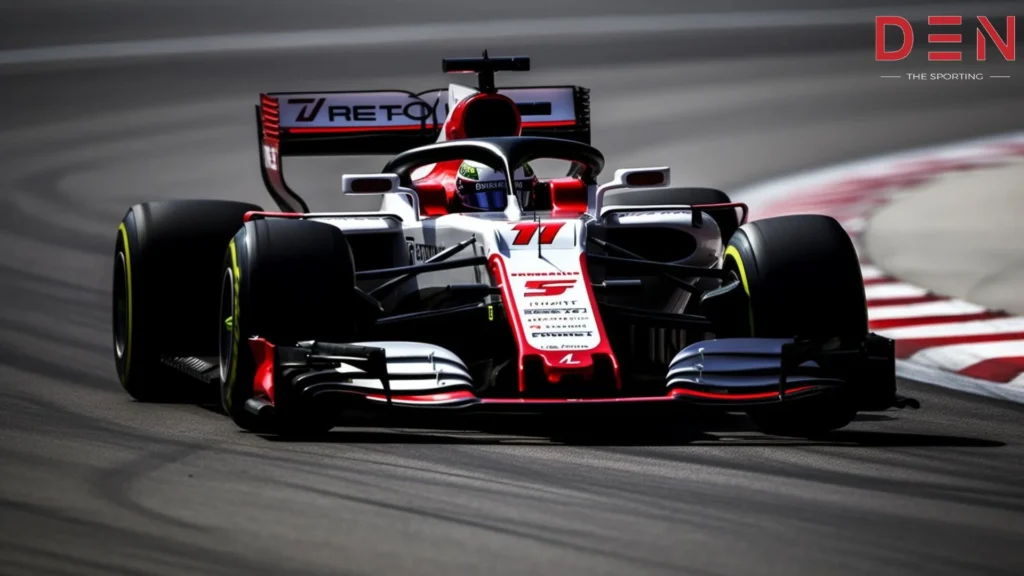
Formula One, the pinnacle of motorsport, has always been a thrilling blend of human skill, cutting-edge technology, and strategic decision-making. However, in recent years, data analytics has emerged as a game-changer, fundamentally transforming how teams approach race strategy. This article explores the fascinating world where Data Analytics is Revolutionizing F1. Delving into how it is revolutionizing every aspect of strategic decision-making, from pit stop timing to tire management and race simulations.
Beyond the Pit Wall: A Sea of Data Awaits
Modern F1 cars are instrumented with a multitude of sensors, generating a constant stream of real-time data on various parameters. These include:
- Car telemetry: Engine performance, tire wear, fuel consumption, and aerodynamic data are continuously collected, providing a real-time snapshot of the car’s health and performance.
- Driver biometrics: Heart rate, breathing, and reaction times are monitored to gauge driver fatigue and physical state, allowing for strategic adjustments based on driver fitness.
- Track data: Detailed information on weather conditions, track temperature, and tire performance on specific track sections is continuously gathered and analyzed.
- Competitor data: Telemetry from rival cars and historical race data are analyzed to predict competitor strategies and identify potential weaknesses.
This vast amount of data represents an invaluable resource for F1 teams. However, the true power lies in its analysis and interpretation.
The Strategist’s Arsenal: Tools and Techniques for Data-Driven Decisions
F1 teams leverage a sophisticated arsenal of data analytics tools and techniques to extract meaningful insights from the data deluge:
- Machine Learning (ML): ML algorithms analyze historical data and identify patterns, allowing for predictive modeling of race outcomes, tire wear, and car performance under various conditions.
- Real-time Analytics: Advanced software platforms consolidate and analyze data in real-time. Enabling race engineers to make informed decisions on pit stops, tire changes, and car adjustments based on the latest information.
- Simulation Software: Sophisticated race simulations incorporate real-time data and weather forecasts, allowing teams to model various race scenarios and strategize accordingly.
These tools empower F1 teams to make data-driven decisions with greater speed and accuracy. Gone are the days of relying solely on intuition and gut feeling. Strategic decisions are now backed by a robust foundation of real-time and historical data analysis.
Optimizing Every Aspect: How Data Analytics is Revolutionizing F1

Data Analytics is Revolutionizing F1 strategy:
- Pit Stop Optimization: Data analysis helps determine the optimal lap for pit stops, considering tire wear, fuel consumption, and potential track position gains.
- Tire Management: Real-time data on tire wear and track conditions allows teams to optimize tire strategies, maximizing tire life and performance throughout the race.
- Overtake Opportunities: Advanced analytics can identify potential weaknesses in competitor strategies. And track specific sections where overtaking maneuvers might be most successful.
- Race Pace Management: Data empowers teams to set optimal race pace, balancing aggression with fuel efficiency to maximize race position and potential for victory.
The influence of data analytics extends beyond race day. Historical data is used to improve car development. Identify areas for improvement, and refine race simulations for future events. In essence. Data Analytics is Revolutionizing F1 strategy into a meticulously calculated science, with minimal room for error.
The Human Touch Endures: Collaboration and the Future of Data-Driven F1
Even as data gains prominence, the human factor retains its significance in F1 strategy. Seasoned race engineers and strategists analyze data, draw from their racing acumen. And execute vital decisions on-the-fly, reacting to the race’s fluid dynamics. The forthcoming era of F1 strategy hinges on harmonizing human proficiency with the capabilities of data analytics.
Furthermore, ethical considerations regarding data privacy and sharing of information among teams are ongoing discussions. Finding a balance between maximizing the benefits of data analytics and preserving a competitive environment will be crucial for the future of the sport.
Suggested Read: The Aerodynamics of F1 Cars Explained: Unveiling Invisible Force
FAQs
Traditionally, strategy relied on experience and intuition. Now, data analysis provides crucial insights, allowing teams to make more informed and precise decisions during races.
A vast amount of data is collected, including: Telemetry Data: Real-time information on car performance, like speed, tire wear, and engine data.
Historical Race Data: Past race data helps predict pit stop strategies, tire behavior, and competitor performance.
Weather Data: Real-time and historical weather data assists in strategy adjustments for changing track conditions.
We can expect advancements in areas like: Machine Learning and AI: Using AI to analyze complex data sets and predict race outcomes with even greater accuracy.
Real-time Analytics: Providing even more dynamic race strategy adjustments based on constantly changing race conditions.
Explore the following resources: Formula 1 Website: F1 Race Schedule and more will be available on (https://www.formula1.com/)
Summing it Up
Data Analytics is Revolutionizing F1 strategy, transforming decision-making from a reliance on intuition to a data-driven approach. Utilizing a continuous flow of analyzed data, every facet of strategy, from refining pit stops to assessing overtaking chances, is now enhanced. Nonetheless, the human touch remains invaluable. Future F1 strategists must excel in both communication and data interpretation, merging human insight with analytical prowess to clinch triumphs on the circuit.




